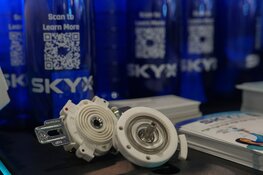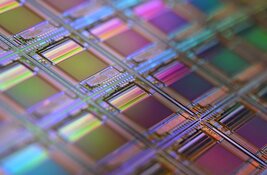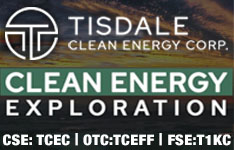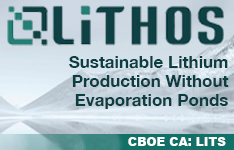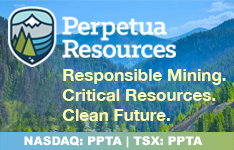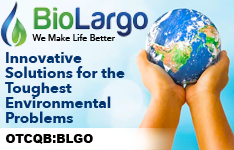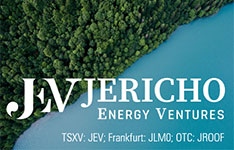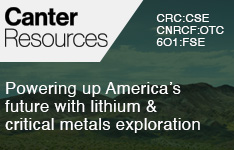BioLargo Inc. (BLGO:OTCQB) may be uniquely positioned to take advantage of new U.S. federal drinking water standards announced Wednesday meant to limit exposure to so-called "forever chemicals."
The clean tech company's technology removes more than 99% of those dangerous per- and polyfluoroalkyl substances (PFAS) from water.
"There's no doubt that these chemicals have been important for certain industries and consumer uses, but there's also no doubt that many of these chemicals can be harmful to our health and our environment," said Environmental Protection Agency Administrator Michael Regan in a call with reporters, NPR reported.
It's the first time the EPA has set enforceable limits on the substances in drinking water. The agency estimated it will cost US$1.5 billion annually for water companies to comply with the rule.
About US$1 billion in grants are also being made available to help water systems and private well owners conduct testing and treatment. According to NPR, the money is part of US$9 billion in funding for PFAS removal in the Bipartisan Infrastructure Law.
"The final rule is a breakthrough for public health," Erik Olson, a senior director with the National Resources Defense Council, told NPR. "We believe it's going to save thousands of lives as a result of reduced exposure of tens of millions of people to these toxic chemicals in the tap water."
The Catalyst: Chemicals Removed to Level of 'Non-Detection'
BioLargo's Aqueous Electrostatic Concentrator (AEC) technology removes more than 99% of PFAS substances from water, the company said.
The process separates the compounds in an electrostatic field, forcing them across a proprietary membrane system. The AEC's energy costs are as low as 30 cents per 1,000 gallons, and its waste stream is a fraction of that of traditional carbon or ion exchange systems.
Testing has shown the technology removes the chemicals to a level of "non-detection," or a level at which science can no longer detect them, the company said.
PFAS are a group of thousands of synthetic chemicals used in everything from the linings of fast-food boxes and non-stick cookware to fire-fighting foams and other purposes. High concentrations may lead to adverse health risks such as cancer, hormonal disruption, and reduced immune system effectiveness, although research is still being conducted. They are called "forever chemicals" because they break down very slowly.
The EPA has noted about 70 million people are exposed to PFAS in U.S. drinking water, but that testing has only checked about one-third of the nation's public water systems. The agency said it is on pace to find over 200 million people exposed, or at least 60% of Americans, not including those who use private wells. There's even a map of PFAS detections across the country.
More than 15,000 PFAS claims have been filed nationwide against DuPont and its spinoffs and 3M, major manufacturers of the substances in the U.S., Time reported. So far, settlements have totaled nearly US$11.5 billion in damages.
Before the EPA announcement, state lawmakers in California, Vermont, and Colorado, frustrated by a perceived lack of inaction from the federal government, said they were looking at the ban of PFAS in period products like tampon applicators and period underwear, The Guardian reported.
"This is clearly an urgent women's health issue, nobody can dispute that," California assemblymember Diane Papan told the site.
According to The Guardian, Minnesota is so far the only state to enact legislation that phases out PFAS-containing period products, along with other PFAS-
containing household goods such as children’s toys and cookware. California is poised to follow suit.
Analyst Predicts Rapid Growth
In February, Technical Analyst Clive Maund noted that BioLargo's revenues are "growing rapidly as sales accelerate dramatically" after the company's announcement of a 108% YoY revenue increase from 2022 to 2023 on the strength of Pooph, its successful pet odor control product.
Safe and eco-friendly Pooph products are being sold through retailers like Amazon, Walmart, and Chewy. Other BioLargo subsidiaries include ONM Environmental (which spawned Pooph), BioLargo Engineering, BioLargo Water, BioLargo Energy Technologies, and Clyra Medical Technologies.
"The key point for investors to grasp is that these subsidiaries of BioLargo represent years of developmental work and investment by the company that is now being brought to fruition with market-ready products and services that are being rolled out and gaining widespread acclaim and uptake," Maund wrote.
Maund predicted a "major bull market" for the stock, which rose from about US$0.23 cents per share on February 7 to as high as US$0.45 cents on February 29. It continues to hover in the US$0.30s, but Maund has predicted it could rise even higher than US$1 in the next one or two years.
"The rapid growth prospects for the company's various businesses bring this well within the realms of possibility," he wrote.
Ownership and Share Structure
About 14.6% of BioLargo is owned by insiders and management, according to Yahoo Finance. They include Chief Science Officer Kenneth Code with 8.46%, CEO Calvert with 3.34%, and Director Jack Strommen with 1.46%, Reuters reported.
About 0.04% is held by the institution First American Trust, Reuters said.
The rest, about 85%, is retail.
Its market cap is US$96.91 million, with about 295.55 million shares outstanding and about 253.98 million free-floating. It trades in a 52-week range of US$0.45 and US$0.15.
| Want to be the first to know about interesting Technology investment ideas? Sign up to receive the FREE Streetwise Reports' newsletter. | Subscribe |


